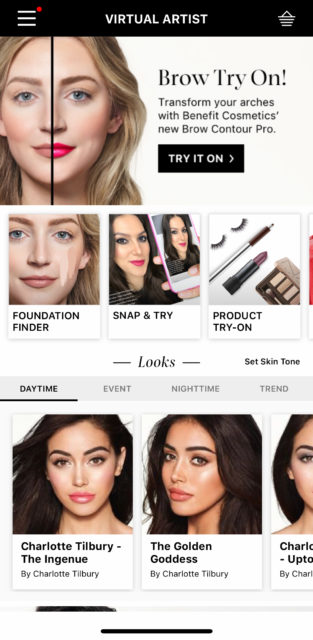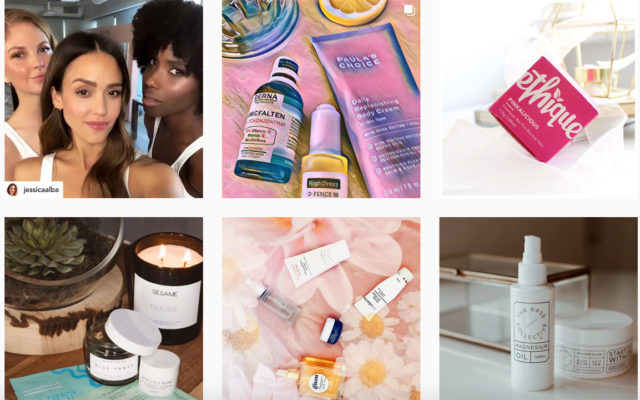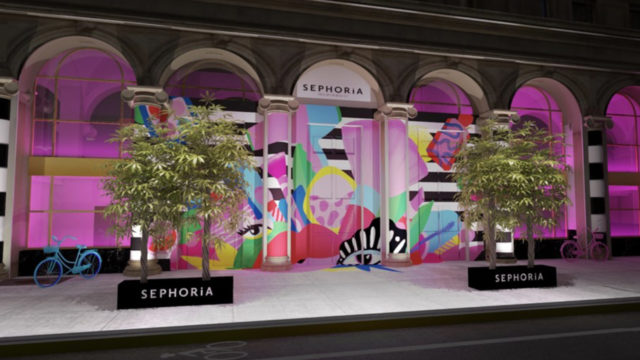This week’s executive shifts include Stella McCartney’s longtime CMO resigning, Aflac chief brand and communications officer dropping marketing duties, RaceTrac promoting their executive director of marketing, Global Chevrolet CMO is retiring, Delta promoting their CMO, Reverb hiring a new chief marketing officer, Parker’s advancing their CMO, Ola Australia hiring a chief marketing officer, Robeks bringing back their former VP of marketing, the Recording Academy’s chief marketing officer resigning, March of Dimes hiring a new CMO, Downlite appointing a chief sales and marketing officer, JCDecaux promoting their marketing director, Tiger of Sweden appointing an interim CEO, United Breweries adding CMO, Stio welcoming a new president and chief marketing officer and a new CMO for Sybel.
Check out our careers section for executive job openings and to post your own staffing needs.
Stella McCartney CMO Steps Down
Stella McCartney’s chief marketing officer, Stephane Jasper, is resigning. Jasper joined the company in 2003 and worked in PR, marketing, digital and license. Prior to that, he worked at Nadine Johnson and Miramar films.
”We all wish Stephane a bright and brilliant future, and feel so grateful for all he contributed over the years,” McCartney stated to WWD. “We wish him much love and success.”
Aflac Communications Leader Drops Marketing Duties
Aflac announced their chief brand and communications officer, Catherine Hernandez-Blades, is changing roles and becoming their SVP and chief ESG and communications officer. She will oversee more traditional chief communications officer duties and pick up environmental, social and governance responsibilities. Previously, Hernandez-Blades served as VP and chief marketing and communications officer for Flextronics—a global technological manufacturer.
RaceTrac Promotes Executive Director of Marketing
RaceTrac Petroleum, Inc—a gasoline service station chain—has promoted Melanie Isbill as the company’s chief marketing officer. Previously, she served as the executive director of marketing and as their director of brand communications. Isbill joined RaceTrac in 2008 as a commercial analyst and left to intern at The Coca-Cola Company. She then returned in 2011 as a private label brand manager.
Global Chevrolet CMO Retires
Global Chevrolet announced their chief marketing officer Tim Mahoney is retiring effective March 1. This is one of the many executive changes happening at GM in an effort to evolve its business operations. Previously, Mahoney served as EVP and chief product and marketing officer at Volkswagon America. He also worked as senior VP and CMO at Subaru of America.
Delta Air Lines Promotes CMO
Delta has appointed Tim Mapes as the airline’s chief marketing and communications officer. He will take over John E. “Ned” Walker’s position after he announced his retirement after serving as SVP and chief communications officer for 11 years. Mapes will lead the company’s global marketing, communications strategy and continue to serve as president of the Delta Foundation. Previously, he worked as Delta’s senior vice president and chief marketing officer.
“Tim is a world-class communicator. His more than 30 years of brand, marketing and communications experience inside and outside of Delta make him a strong leader to continue to elevate the momentum we have today,” Delta CEO Ed Bastian told the Atlanta Business Chronicle.
Reverb Hires A New Chief Marketing Officer
Reverb, the e-commerce music gear site, has hired Kristen Cho as their chief marketing officer. In this new position, Cho will assist in growing Reverb’s success by leading the company’s global marketing team, video and editorial content, search marketing and more. Before coming to Reverb, Cho served as CMO of Luxury Garage Sale. She was also VP of marketing at SpotHero, a parking reservation service.
Parker’s Advances CMO To VP of Marketing
Parker’s convenience stores promoted Brandon Hoffman as their new VP of marketing. In this new position, he will oversee Parker’s marketing department. Previously, Hoffman served as the chief marketing officer for the Georgia-based company. Parker’s has 54 stores around Georgia and South Carolina, they opened in 1976. Hoffman been with the company for 22 years.
Ola Australia Appoints Chief Marketing Officer
Ola, the rideshare platform, has hired Andrew Balint as the company’s chief marketing officer for Australia. In his role, Balint will assist in Ola’s growth in the country and New Zealand. Ola’s first Australian city launch was last year in Perth. Previously, he served as CMO of BrickX, a platform to access Australia’s property market.
Robeks Former VP of Marketing Comes Back
Robeks Fresh Juices and Smoothies has appointed Mitch Baker as the company’s VP of marketing. This is not his first time in the role, Baker had the same position from 2004 to 2006. Prior to coming back to Robeks, Baker served as CMO of Drnk coffee and tea and Qwench Juice Bar. Before that, he worked as VP of marketing and senior team member of NutriPartners, Inc.
“I’m so excited to be returning to Robeks and building on the great reputation of the brand, which provides amazing tasting healthy products,” Baker said in the release. “Robeks is in a unique position as a fully franchised juice and smoothie brand to continue massive expansion across the country and I’m looking forward to contributing my energy and experience to that growth once again.”
Recording Academy CMO Resigns After 15 Years
The Recording Academy has announced Evan Greene—the organization’s chief marketing officer—is stepping down. Greene became CMO of the Recording Academy in 2003 and created their first marketing department, their first brand campaign in over 60 years and worked to further develop the Grammy brand. Previously, Greene served as executive director of global promotions for Sony Pictures Entertainment.
March Of Dimes Appoints New Chief Marketing Officer
March of Dimes has hired Cindy Rahman as the senior vice president and CMO of the organization. Aside from overseeing their marketing and communications operations, Rahman will spearhead digital, creative and brand initiatives. Prior to joining March of Dimes, Rahman served as senior vice president of BRG Communications.
“Cindy’s expertise will be a tremendous asset as we continue to sound the alarm on the maternal and child health crisis facing our country, and our work to address it,” said March of Dimes president Stacey D. Stewart in a statement. “We’re delighted to welcome her to the team.”
Downlite Hires Chief Sales and Marketing Officer
Downlite—a bedding manufacturer—has appointed Lisa Pruett as the company’s chief sales and marketing officer. In the role, she will oversee sales, customer care, product management, planning and analytics and marketing. Previously, Pruett served as executive vice president of sales at Easy Way Products.
JCDecaux Announces New Chief Marketing Officer
JCDecaux has promoted Essie Wake as the company’s new CMO. Wake joined JCDecaux in 2011 as a marketing director, where she led OOH marketing, including the launch of the Digital Citylights last year. She also managed the company’s research and communications initiatives. Previously, Wake worked as the research and strategy director with Initiative.
“JCDecaux is a fantastically innovative and progressive business both in Australia and globally. Its commitment to innovation and design, as well as the investment in digital and data capabilities to offer advertisers in-depth, dynamic knowledge about our audience, makes it an exciting time to lead marketing as we enter a new era of growth with much more to come,” said Wake in a statement.
Tiger of Sweden Names Moa Strand Chief Marketing Officer And Chief Executive Officer
The Swedish fashion house, Tiger of Sweden, welcomed Moa Strand as chief marketing officer and interim CEO. On February 18, the board of directors of IC Group A/S has reportedly announced that the previous CEO of the company, Hans-Christian Meyer, resigned with immediate effect. Strand will replace him as the brand leader.
Strand has been with Tiger of Sweden since 2016 and previously served as a head of business development and a Chief Marketing Officer.
Debabrata Mukherjee To Join United Breweries As A New CMO
Although he refused to comment, Debabrata Mukherjee, who is currently serving his notice period at HT Media, he might soon join United Breweries Ltd, as a chief marketing officer, sources told Brand Equity magazine.
Mukherjee started his career 24 years ago as an area sales manager with Hindustan Lever Ltd and previously worked for Coca Cola India and South West Asia as vice president of strategy and innovation. In 2013, Mukherjee was appointed the vice president of South West Asia Operations of Coca Cola India, where he worked for a year before shifting to HT Media Ltd as chief executive director last year.
Stio Appoints Noah Waterhouse President And Chief Marketing Officer
Stio, a mountain lifestyle brand, recently promoted Noah Waterhouse to a president and chief marketing officer.
“I’m very excited to be taking on an expanded role here at Stio,” Waterhouse told SGB Media. “I look forward to working with the rest of the senior team in this new capacity to support our exceptional staff and position the company for continued growth.”
In this role, Waterhouse will be leading the executive team and working closely with product development, operations, finance, marketing and sales teams to generate the company growth.
Waterhouse has been with the company for 20 years.
Franck Rossini To Lead Sybel’s Marketing
After spending six years at Spotify as Marketing Director France and Southern Europe, Franck Rossini takes the head marketing position at Sybel, a French audio app, to develop the new entertainment brand. His main focus will be the audience development in France, and eventually worldwide.
From 2010 to 2012, Rossini was Director of Digital Strategy for Starcom and he previously served as Senior European Marketing Manager at Myspace.
Editor’s Note: Our weekly careers post is updated daily. This installment is updated until Friday, February 22. Have a new hire tip? We’re looking for senior executive role changes in marketing and media. Let us know at editorial@alistdaily.com.
Job Vacancies
Make sure to check back for updates on our Careers page.




